Robert Kirkman Family and the Martin Handcart Company
Michael Baird Cover Letter
November 29, 1998
In the Summer of 1998 my family went to Casper, Wyoming for my parents-in-law Dorothy and Ty Perkins 50th wedding anniversary. While we were there we (Nancy, Kevin, Shellie, Cory and I – Jennifer and Scott had not arrived yet) took the opportunity to go out to Martin’s Cove. It was a profound experience for me. As I was walking what President Hinckley described as "hallowed ground", I found myself wishing the rest of you could be there with me. Since it seemed unlikely to me that any of you would have reason to be out that way, the idea of sharing with you the experience in a small way through this “book” was born while I was there.
The narrative is taken for the most part from a compilation of Arval L. Streadbeck, a cousin of Grandpa (James E.) Baird, as well as other sources such as Reed Kirkman Bitter.
The church has a nice visitor center at the Sun ranch, which is about a mile from Martin’s Cove. It contains a history of the Martin Handcart company along with items depicting life in the Handcart Company.
From the Sun ranch we pushed/pulled a handcart (they have them available to use) out to the Cove. We spent about one hour there before pushing/pulling the cart across the Sweetwater in the same general place as the Martin Company’s crossing and then back to the ranch. At the back of the cove where it is believed the company stayed was stationed a missionary couple along with several benches to sit on. After the couple described for the group of us that was present the various points in the cove, I shared some of the story of our ancestors the Kirkman family with the others there. As I did so I was deeply touched with a sense of admiration, love and gratitude for the members of that pioneer family that is a part of our heritage. I cannot begin to describe my feelings as I walked about the cove, trying to picture the scenes at that time. Even now, over 3 months later as I put this together my emotions are overwhelmed when I think of standing in Martin’s Cove.
Love,
Michael
Here is a Link to a pdf of this web page for downloading
Robert Kirkman is my 3rd-great grandfather through his son Joseph Kirkman.
The Kirkman Family
Robert Kirkman
Born 1 Jan 1821, Breightmet, Bolton, Lancashire, England. Son of John Kirkman and Ellen Lomax. Died 11 Nov 1856.
Robert was the 4th of at least 10 children. He found employment at a youthful age in the coal mines and making the mines his vocation, was a collier or coal miner in the Ton River mines at maturity.
Robert heard the gospel preached in Bolton, England and was baptized 3 November 1841.
Mary Lawson
Born 26 Feb 1823 in Harwood, Lancashire. Daughter of John Lawson and Francis Bradshaw. Died 10 Mar 1899.
Her father was a weaver in one of the mills in the district. As a girl Mary was able to gain employemnt also in a mill as a reeler making spool cotton, i.e. winding thread on spools. Mary was baptized on 18 September 1841.
Robert & Mary
Were married, according to Mary on Robert's birthday 1 Jan 1845 and this was later solemnized at the Parish Church in Bolton LeMoors 17 August 1845. This duplicate process was often used to legitimize a child before it's birth due to the high cost of the formal marriage certification and Mary by August was three months along with the Robert who was born 23 Feb 1846 in Manchester. On their marriage certificate each signed with an "X" indicating neither could write. Robert continued his employment in themines and earned barely enough to feed and house their growing family of boys. Despite their fervent desire to gather with the others of their faith in America, they were unable to save enough for the journey.
Their children:
- Robert (23 Feb 1846 - 02 Jan 1918)
- John (17 Feb 1848 - 27 Dec 1930)
- Joseph (11 Mar 1846 - 05 Mar 1925)
- Hiram (28 Jan 1852 - 08 Dec 1867)
- James (25 Apr 1854 - 05 Nov 1915)
- Peter (09 July 1856 - 11 Nov 1856)
The Kirkmans and the Martin Handcart Company
In 1855, the new Perpetual Emigration Fund enabled them to go to America. Preparations were made even though Mary was several months pregnant with their 6th child. They made their way to Liverpool, about 28 miles away, and were assigned to the packet ship "Horizon" (Captain Reed) along with 800 passengers, mostly Latter-Day-Saints. They were placed under the direction of Edward Martin and Jesse Haven by Franklin D. Richards, President of the European Mission. The embarked from Bramley Moor dock on 22 May 1856.
The Martin Handcart Company sailed from England May 25, 1856. Their rations were salt pork, salt mustard, pepper, salt and water. On the passenger list of 856 Mormons was a Robert Kirkman and Family, which read:
Robert – 34 years
Mary Lawson – 33 years (his wife who was with child)
Robert – 10 yrs old
John – 8 yrs old
Joseph – 6 yrs old
Hiram – 4 yrs old
James – 2 yrs old
They disembarked in Boston, June 30, took the train to Albany, New York, passing through Buffalo, New York on the 4 of July. July 8 they crossed the Mississippi by ferry then took the train from Davenport to Iowa City. On July 11, another son, Peter, was born into the Kirkman family.
The Saints in Iowa had already outfitted four companies of handcarts and were not prepared for this late group. It took all of July to outfit the Willie Company, which left August 19. Now they were hastily making carts for the Martin Company.
Several leaders tried to talk the company out of taking the trek so late in the year. Robert Kirkman had been offered a position for the winter so decided to stay in Iowa until Spring, but the other Saints came so many times to beg him to go with them that after talking it over with his wife Mary, he gave in and said “We’ll go with the Saints, live or die”
Some started to leave August 27, but it was September 3, when the Kirkmans started on their perilous journey of 1,300 miles with the group of 576 people, 146 handcarts, 7 wagons, 30 oxen, 50 cows and beef cattle. The strength of the company was equalized as much as possible by distributing the young men among the different families to help them. Young girls drew several carts.
The road across Iowa was good, and the journey, though made through dust and heat, was accomplished without unusual difficulties, yet a few people dropped out and refused to go on. The journey of 277 miles to Florence, near present day Omaha, Nebraska was made in a little less than four weeks. Here they had to stop for repairs to the carts that had been made of unseasoned wood and were poorly put together. Other carts were overloaded, although each person was allowed only 17 lbs. of clothing and bedding, which was insufficient for comfort.
It was now October and an early winter had set in. Progress was slow, and soon provisions began to give out. The food allowance grew smaller. Elizabeth Jackson in her account said,
“Supplies were running out. First we received one pound of flour. Then it was reduced to three-fourths, then one half, then even less. Strongmen became weak and women suffered terribly. It was 474 miles across Nebraska.”
Brigham Young sent out rescue teams from Salt Lake. William Kimball and six other teams had located the Willie Company and remained with them at Willow Creek, 14 miles east of South Pass on the Sweetwater River. They expected to find the Martin Company at Devils Gate and hoped to find them in better condition than the Willie Company. Because at Devils Gate there was a little log stockade, three or four cabins, and a cove across the river where year round firewood and forage could be found.
The company’s first great trial came when they crossed the North Platte River on October 19 near present day Casper, Wyoming. That day was bitter cold. Winter came on all at once, and that was the first day of it.
John Jaques:
“The river was wide, the cold, exceedingly cold water, was up to the wagon beds in the deepest parts, the current was strong, and the bed of the river was covered with cobble stones. Some of the men carried some of the women over on their backs, or in their arms, but other women tied up their skirts and waded through, heroines that they were, as they had done through many other rivers and creeks. The company was barely over, when snow, hail and sleet began to fall, accompanied by a piercing north wind, and camp was made on this side of the river.”
The next day after crossing the Platte, the company moved on slowly about ten miles, through the snow and camped near the Platte, at the point where the road left the Platte for the Sweetwater. It snowed for 3 days and it was deemed advisable not to proceed further for a few days. In the 9 days after the crossing of the Platte 56 people died. Mrs. Elizabeth Jackson tells of how she had to remain by the side of her dead husband all night.
“When daylight came some male members prepared his body for burial. They did not remove his scant clothing but wrapped him in a blanket and placed him in the pile with 13 others who had died, then covered them with snow, for the ground was frozen so hard they could not dig a grave.”
Samuel Oppenshaw:
“We are now seeing the storms increasing upon us in the midst of an inclement and howling desert, far way from human succor and having only a few days rations in the camp, we summoned all our strength and effort to make another move, but our oxen, having died off, and our strength being very much reduced, the snow, cold and the blasting winds, it seemed impossible for us to travel. In fact, we were traveling all day, cold, hungry and fatigued. We put up our tents, and then shoveled out the snow and put it around the bottom of the ten, in order to keep out the winds and to make ourselves somewhat comfortable.”
When George Grant and his rescue party arrived at Devils Gate there was no sign of the Martin Group or the Hodgett and Hunt wagon trains that followed them. An express team of Joseph Young, Abel Garr and Cyrus Wheelock were sent out to find them. They rode hard one full day. The next day they were delayed till noon because their horses had wandered off with a buffalo herd. Then they rode full gallop till mid afternoon, when Joseph Young saw a white man’s tracks in the road. Soon they found the Martin camp. It was 65 miles east of Devils Gate. They had been stranded there for nine days.
“56 people had died, mostly old people or middle aged men. Many young women had developed ‘dementia’ and didn’t recover till long after their arrival in the Valley. Some men were spiritually demoralized more than physically. These people had come from a mild climate in England so their reaction was not merely broken pride but shock resulting from physical and emotional trauma.”
The company left the Platte on October 29, striking out toward the Sweetwater. In the afternoon of the last day of October the company arrived at Greasewood creek (now called Horse creek), between 30 and 40 miles from the last crossing of the Platte.
Quoting from the Kirkman Family record October 28:
“Dan Jones and Abe Garr arrived to tell us that we must travel 30 miles farther west where we would meet 10 wagons from Utah with provisions. The next day the three groups were ordered to move forward. The last two were the hardest to move, till Brother Garr said for them to look ahead. Clouds and snow filled the sky, but one light spot could be seen. He said ‘This is our opening to the valley.’ The people soon left to find their cattle.”
Some hours after the Martin Company left the Platte the Hunt Company saw the Martin Company struggling up a “long muddy hill”. Dan Jones then abandoned the wagoneers and went to the aid of the handcart people. His diary reads:
“A condition of distress here met my eyes that I never saw before or since. The train was strung out for 3 or 4 miles. There were old men pulling along sick husbands, little children 6 to 8 years old struggling through the mud and snow. As night came on the mud would freeze on their clothes and feet. There were two of us and hundreds needing help. What could we do? We gathered on to some of the most helpless with our lariats tied to the carts and helped as many as we could to the camp on Avenue Hill.”
After the company was moving toward Greasewood Creek, Joseph Young rode to Devils Gate to alert the rescue party to the needs of the refugees.

Horse (Greasewood) Creek
Looking from the highway southwest of Casper
Captain Grant and others, after one days travel met the Martin Company at Greasewood Creek. Robert Burton’s account book shows that at Greasewood creek the following was dispersed: 12 pairs of boots and shoes, 157 pairs of socks and stockings, 30 quilts or comforters, 100 frock coats and jackets, 36 hoods, 80 petticoats and bloomers, 27 hankies, 8 pairs of mittens. Still only one of every two people in the Martin Company now possessed a good coat or pair of stockings without holes, and each tent had only 1 blanket.
Heber McBride:
“The 10 wagons had relieved them of some of their load by taking the sick into their wagons plus tents and cooking things. There were 2 men to each wagon and as they were hearty and strong they took upon themselves to do all the work about camp. The men from Salt Lake would clean off the snow and pitch the tents and get wood for all the families that had lost their father, and then do what they could for the rest.”
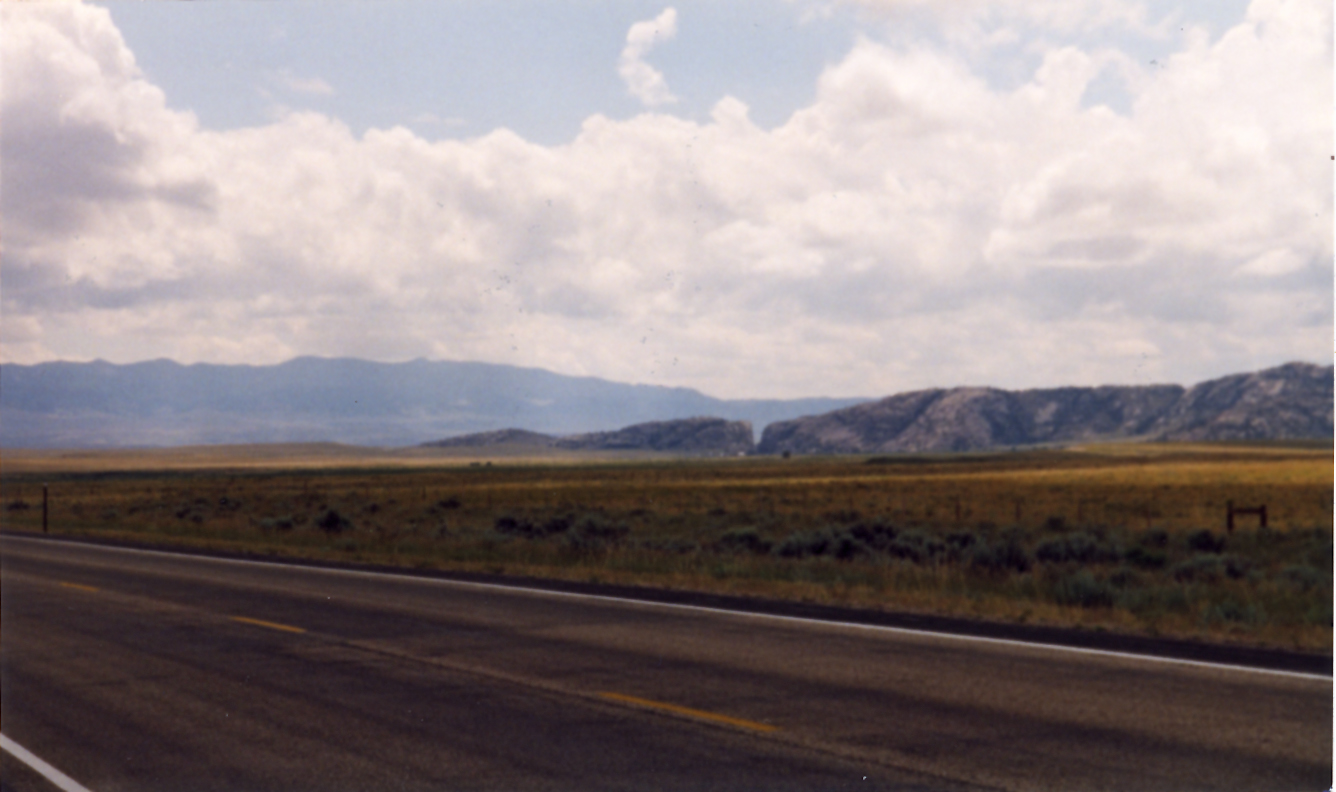
Devils Gate
Looking from the highway near Horse (Greasewood) Creek
George D. Grant:
“ We met Brother Martin’s company at Greasewood creek on the last day of October. Brother Hodgett’s company was a few miles behind. We dealt out to Brother Martin’s company, the clothing, etc. that we had for them, and next morning, after stowing our wagons full of the sick, the children, and the infirm, with a good among of luggage, started homeward about noon. It is now about eight inches deep here, and the weather is very cold. You can imagine between 500 and 600 men, women and children, worn down by drawing handcarts through snow and mud, fainting by the wayside; falling chilled by the cold; children crying, their limbs stiffened by cold, their feet bleeding, and some of them bare to snow and frost. The sight is almost too much for the stoutest of us. Our company is too small to help much. It is only a drop in the bucket, as it were, in comparison with what is needed.”
November 1 they camped near Independence Rock, 16 miles east of Devils Gate. Eighteen inches of snow was on the ground.

Independence Rock
The next day the company crossed through Rattlesnake gap and forward to Devils Gate, where there were more of the relief party with wagons and provisions.
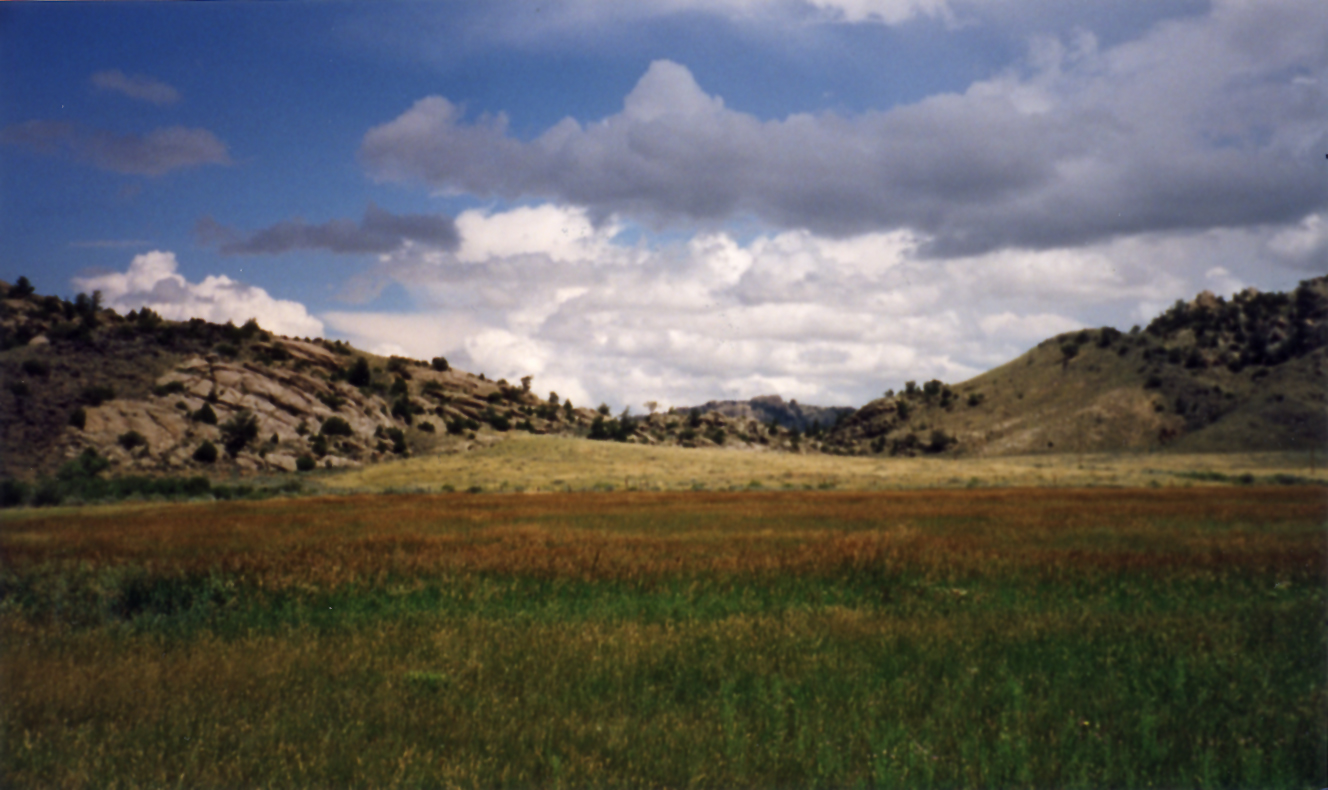
Rattlesnake Gap
Quoting from the Kirkman Family record:
“ We camped Sunday November 2 at Devils Gate. The snow was deep and very cold. Some prominent members of the relief party remarked that they had crossed the plains 10 or 15 times, but they had never seen a company of Mormons in such sad plight and their hearts were filled with gloom and some doubt as to our being able to live and get to Utah that winter.”
John Jaques:
“There was a foot or eighteen inches of snow on the ground, which, as there were but one or two spades in camp, the emigrants had to shovel away with their frying pans, or tin plates or anything they could use for that purpose before they could pitch their tents, and then the ground was frozen so hard, that it was almost impossible to drive the tent pegs into it. Some of the men were so weak, that it took them an hour or two to clear the places for their tents and set them up. They would shovel and scrape away at the hard snow for a few minutes, and then rest, and then shovel and scrape and rest again and so on.”
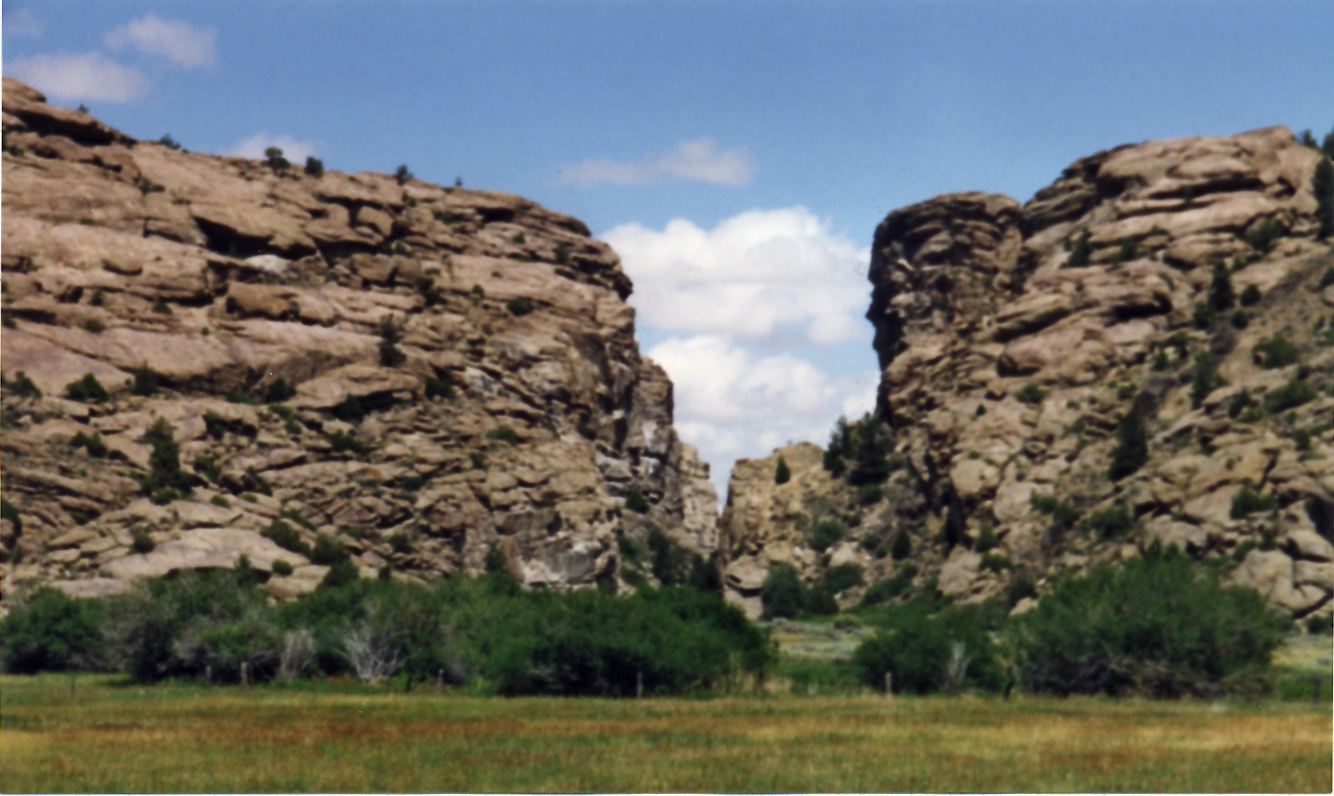
Devils Gate
On November 3, a council was held to decide whether to winter at Devils Gate or push on to Salt Lake. Only one third of the Martin Company were able to walk. It was decided to continue the march to Salt Lake the same season. Joseph Young and Abel Garr were sent to Salt Lake to convey information as to the situation of the emigrants. On November 4, the Martin Company was asked to camp some 3 miles away in what is known as Martin’s cove. To get there they had to cross the Sweetwater River, which was 2 feet deep and some 90 to 120 feet across. The river was very cold with ice floating in it. They had bad memories of their crossing of the North Platte River, but finally a few of them pulled their carts across while others had the help of the rescue party. David P. Kimball, Stephen W Taylor, George W Grant, and C. A. Huntington were young men who carried women, children and some of the men across the river. All later died from the effects of their heroism at an early age.

The Sweetwater River Ford
View from before crossing
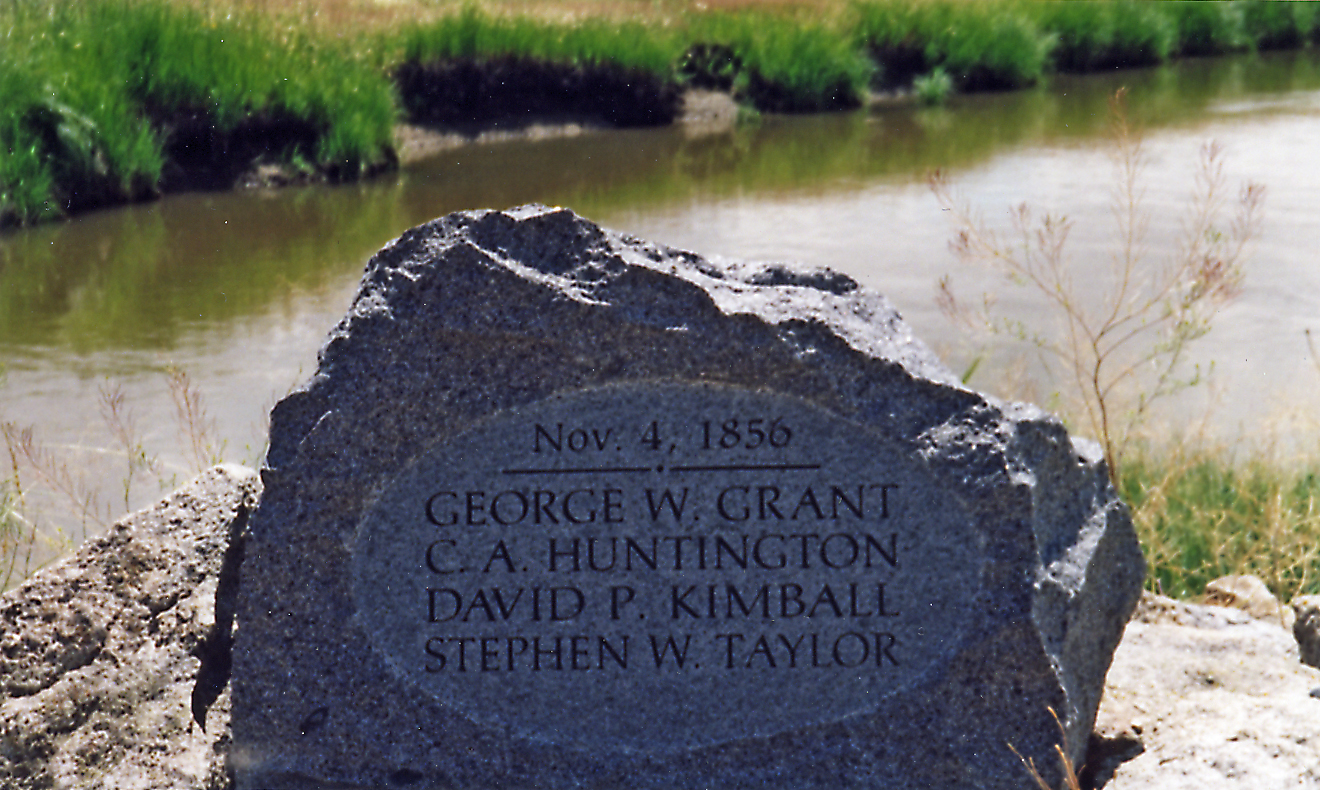
Memorial at the Sweetwater Crossing
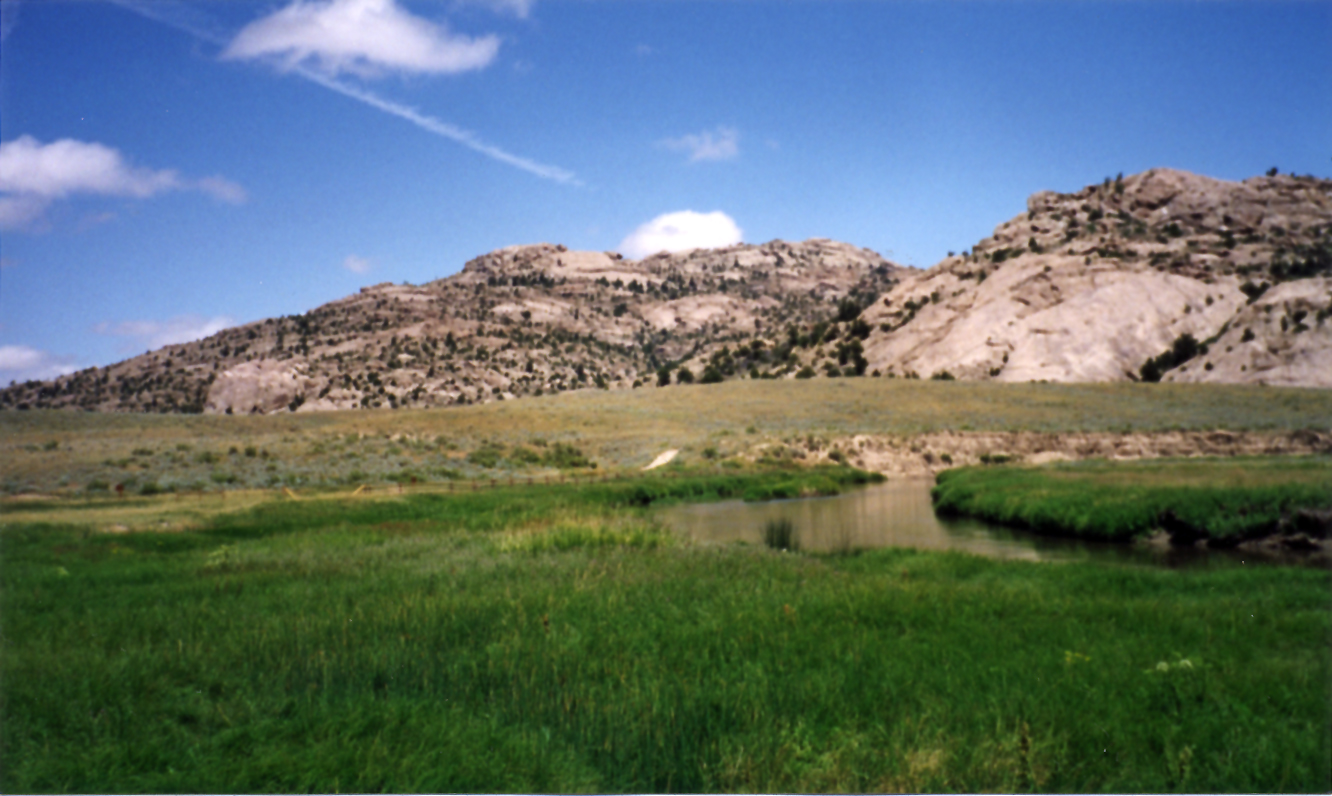
Sweetwater River in for ground, after the crossing
Martins Cove in the background, the gap directly above the river
Quoting from the Kirkman Family record:
“November 4 we went across the Sweetwater and went up into what was called Martin’s Ravine for 5 hungry days. We had little clothing and had given up all hope. The Ravine was like an overcrowded tomb. On November 6 the temperature was 11 degrees below zero. Some doubted if help would come.”
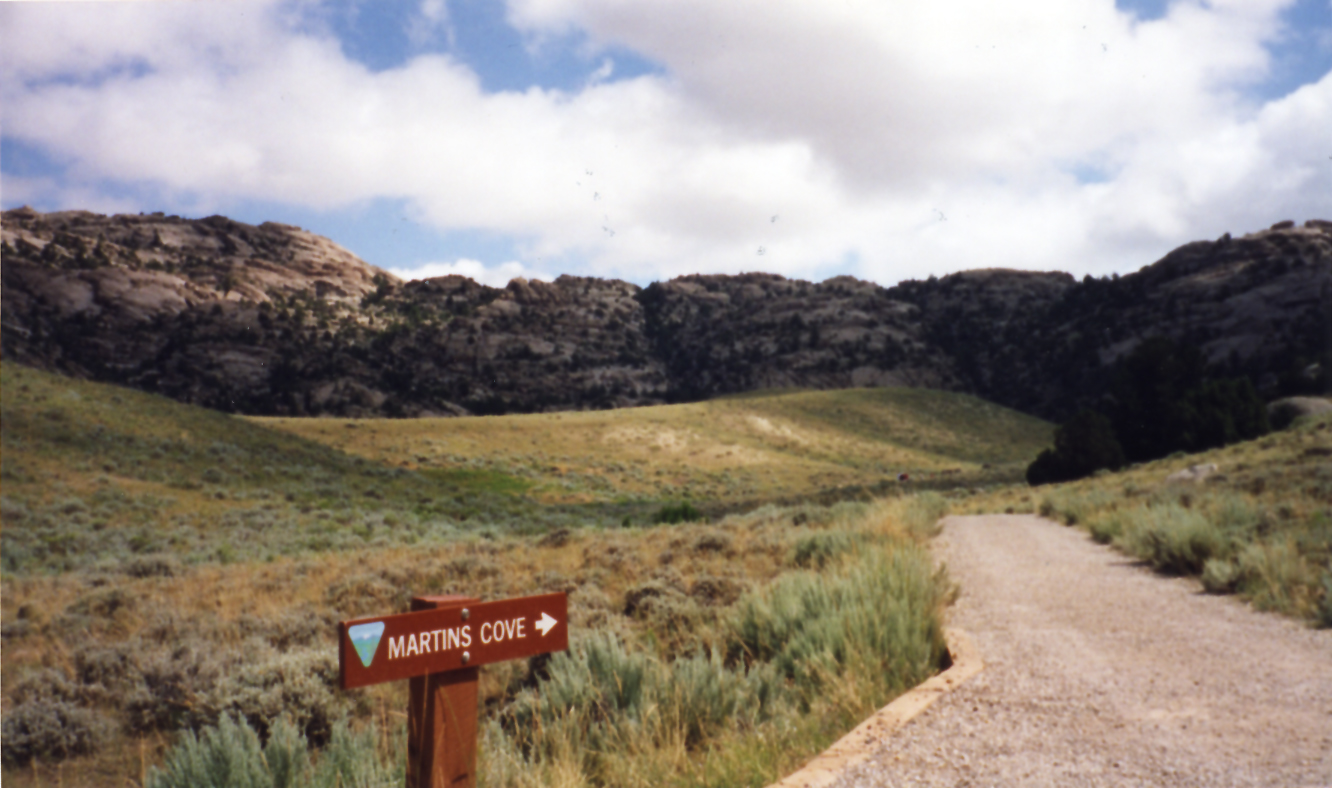
View into Martins Cove
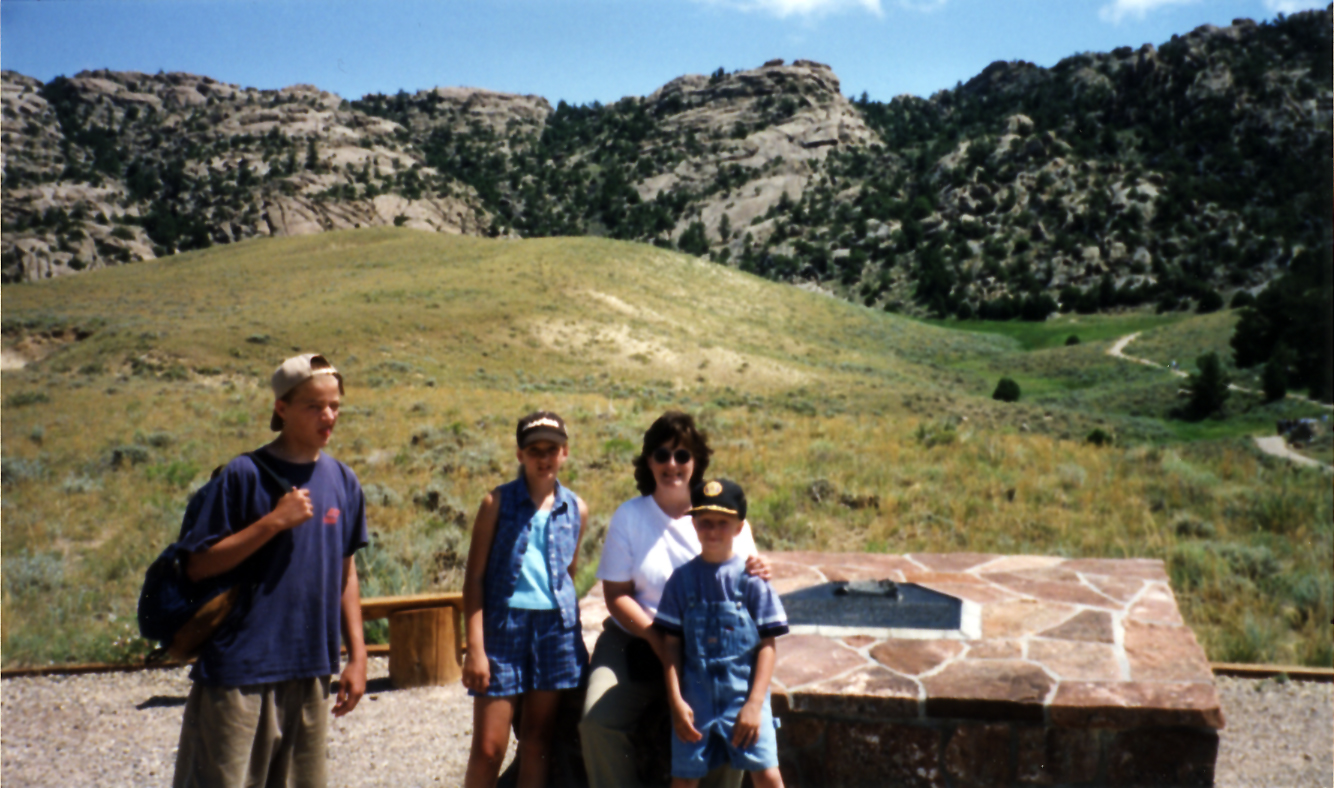
Martins Cove
View from the entrance
The company lost some 56 members in the cove, many dying from exposure. More rescuers were on the way but many stopped at Fort Bridger and others at South Pass assuming that the Martin Company had all perished. Ephraim K. Hanks pushed on alone determined to find them. He killed a buffalo on the way and was able to bring fresh meat to the starving camp.
Ephraim Hanks:
“ The sight that met my gaze as I entered their camp can never be erased from my memory. The starved forms and haggard countenances of the poor sufferers, as they moved about slowly, shivering with cold to prepare their scanty meal was enough to touch the stoutest heart.”
Hanks went about administering to the sick. He continues:
“Many of the immigrants whose extremities were frozen, lost their limbs either whole or in part. Many such I washed with water and castile soap, after which I would sever the shreds of flesh from the remaining portions of the limbs with my scissors.”

Martins Cove Campsite
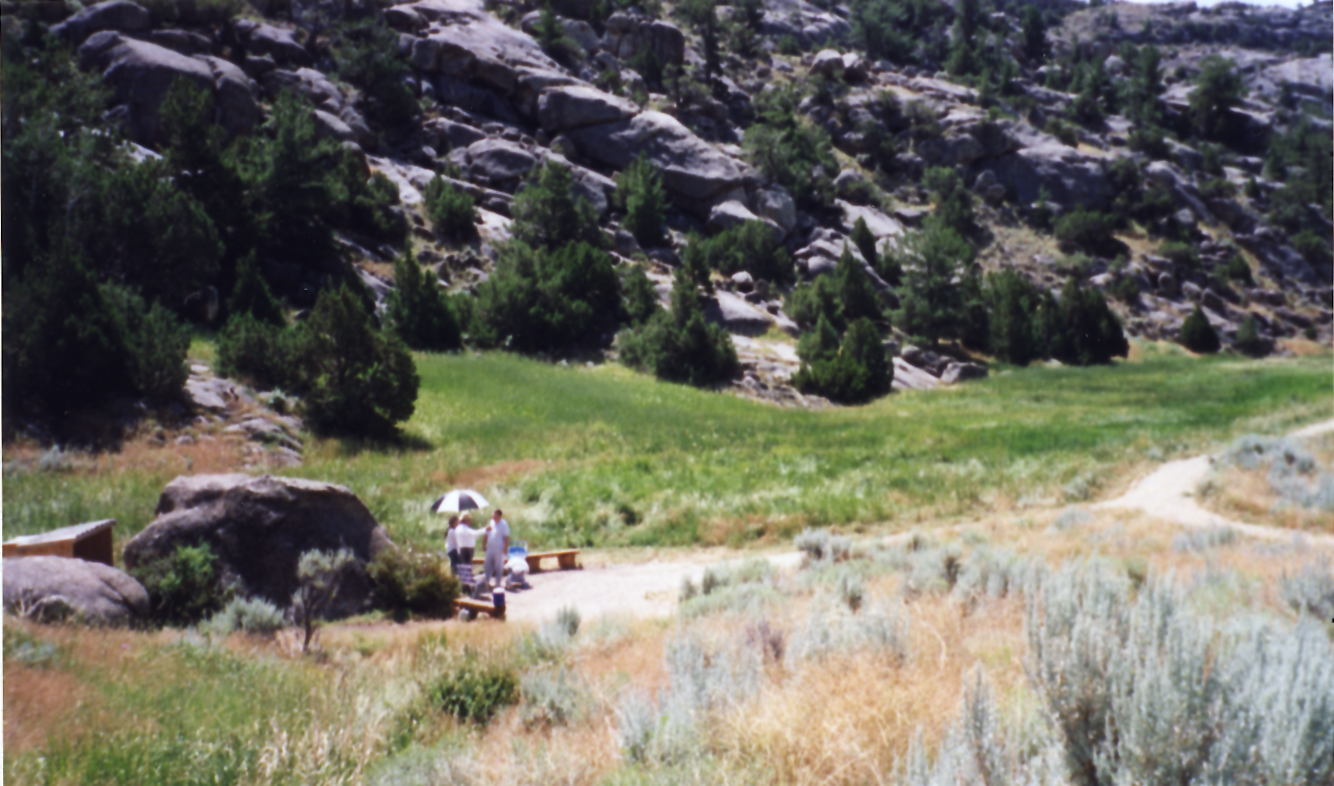
Martins Cove Campsite
View from higher up
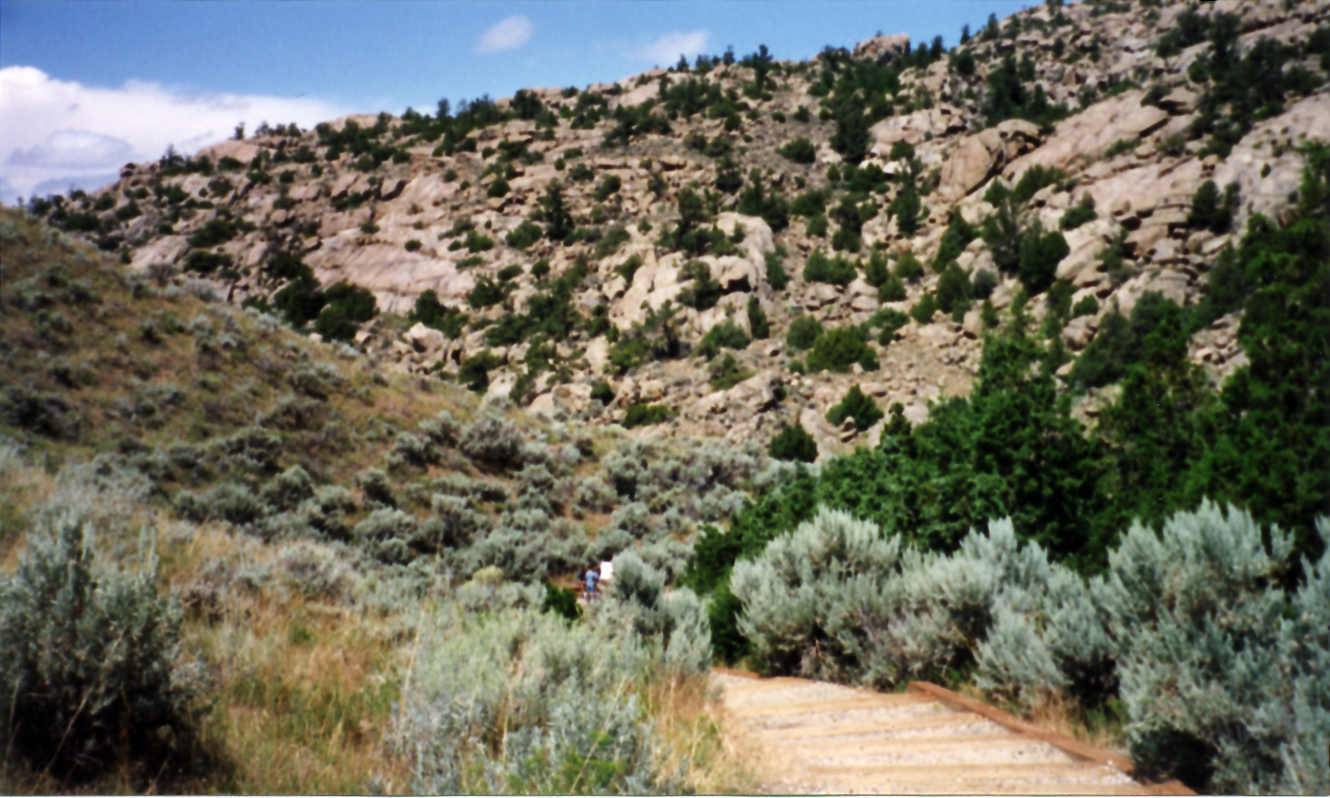
Martins Cove
View over the hill from the campsite
Those who died at the cove were buried here somewhere

Martins Cove Cedar stump
You can see the square axe marks on the stumps from up close
On November 8 the Martin Company hunted stock and prepared to leave the next day. At noon on November 9 they moved out. The severe cold continued. Ice on the Sweetwater was thick enough to support wagons. They crossed the Sweetwater and moved on and after several days camped at Bitter Cottonwood Creek where it met the Sweetwater in Wyoming, near what is known as Three Crossing.
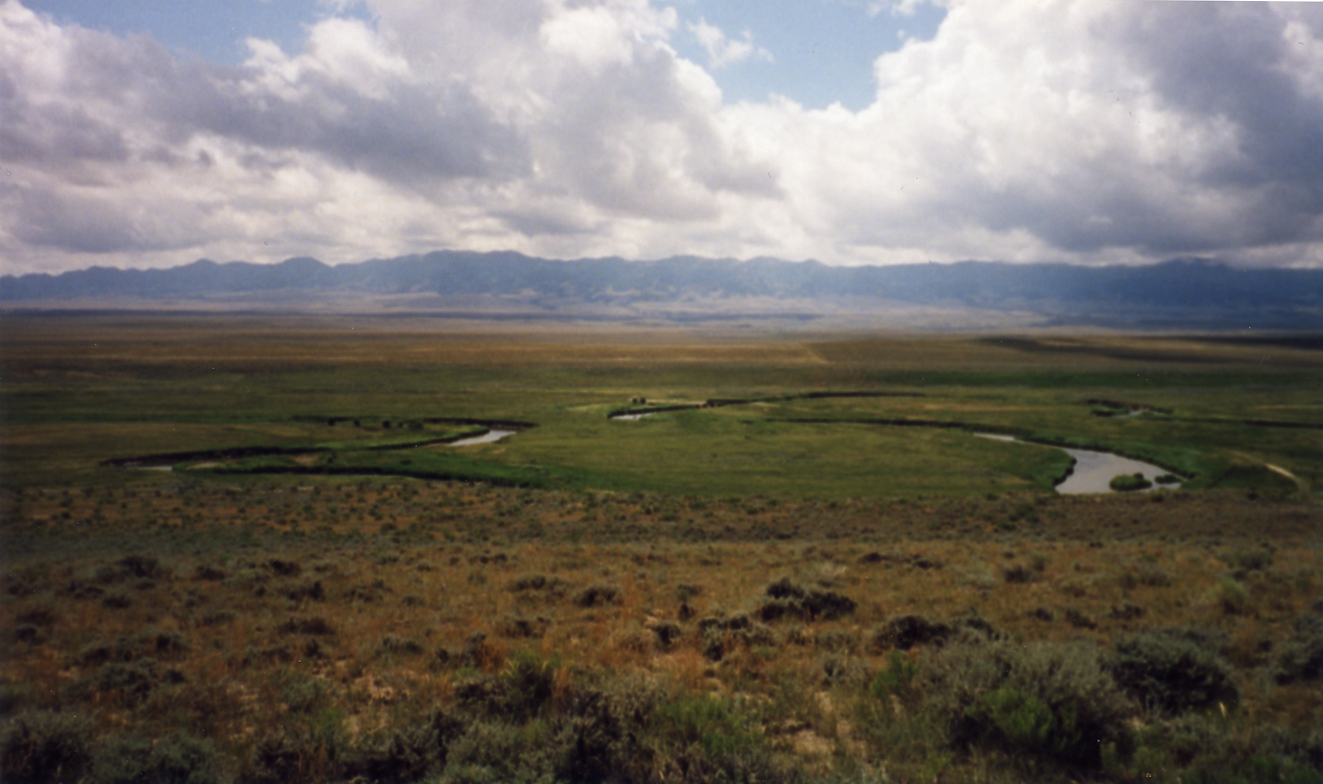
Looking out over the Sweetwater River from the entrance to Martins Cove
Mary Kirkman was naturally weak caring for a nursing baby and 5 other children. Robert was weak for want of food, having denied himself for the children, and the terrible strain of the journey. The night of November 11 was very cold. During a snowstorm that raged, Robert placed his coat over his wife and baby. On that night Robert and the baby Peter died. The next morning they built a fire to thaw the ground so that a grave could be dug. With the baby clasped in Robert’s arms, they wrapped them both in their only blanket and laid them tenderly in the ground. Mary had to take up the journey alone with her remaining 5 children. Provisions were almost depleted. They had little clothing and she had almost given up all hope of reaching the Valley.
On November 12, four loaded wagons reached the starving people near Three Crossings. This deliverance was one day too late for the Kirkman family. They were still a long way from the Valley. One fourth of their company had died, but those remaining received a new lease on life. For the next while they even had good weather.
By November 16 the company was at Rocky Ridge, November 19 at South Pass and they had reached Fort Bridger. Here they abandoned the rest of the handcarts and rode in wagons the rest of the way to Salt Lake. On November 25 they reached Bear River near present day Evanston and on November 29 they crossed Big Mountain. The snow was four feet deep with 20-foot drifts on the north side of the summit. At noon on November 30, a Sunday, 104 wagons carrying the Martin Company members, pulled up in front of the tithing office. They had lost about 150 people on the journey.
John Kirkman, age 8 at the time, later wrote:
"After arriving in Salt Lake City on November 30, 1856, we were met by William Clyde with an ox team and taken to Springville, saying one night with the Bisho of American Fork and receiving great kindness. Next day we arrived in Springville, and how kind the people were to us half-starved people. The children's feet were frozen so badly they had to lie down all the while. My brother Robert (age 10) had lost 2 or 3 toes from each foot and James (age 2) lost half of both feet. The good people of Springville will never be forgotten for their kindness to us and my mother. Father Bird, father of Richard Bird, who was our family doctor, came to our home every day for months and dressed the wounds with the help of mother. Brothe and Sister Devonish, Amos Warren, Father Humphrey, William Huntington, Bishop Aaron Johnson, Benjamin Blanchard, with many others supplied all our needs. Mother's time was taken up caring for the family."
The next spring, on 23 Mar 1857, Mary was married for time to Charles Huled in President Brigham Young's office and at the same time was sealed to her beloved Robert Lomax Kirkman for eternity. The Sealing was performed by Heber C. Kimball, one of the missionaries who taught her family in England. Hulet provided them with a comfortable home and much affection. To this union two children were born, Margaret Ann and Mary Frances. Charles Hulet died 9 May 1863. The following year Mary married Joseph wood Cook on 12 Mar 1864. This union did not last and was ended in divorce before their only child, Viola, was born. Mary died at her home in Springville, Utah on 10 Mar 1899 at the age of 76 and is buried besides her son Hyrum and others of her extended family.
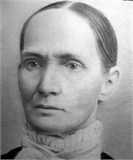
Mary Lawson
Arval L. Streadbeck (cousin to James E. Baird):
“My grandfather was the 6 year old boy Joseph Kirkman who had walked across the plains. He lost several of his toes from frostbite. His brother James, who was 2 years old, lost half of both feet. Their mother Mary, was a good, kind, devoted mother, full of faith, and in spite of all her suffering and sacrifice she never uttered a word of complaint. One thing she could not endure was to join in the handcart parade or even look upon a handcart. This would bring back too many sad memories of the past.”

Joseph Kirkman
Photos of Michael Baird Family at the Sun Ranch & Martins Cove
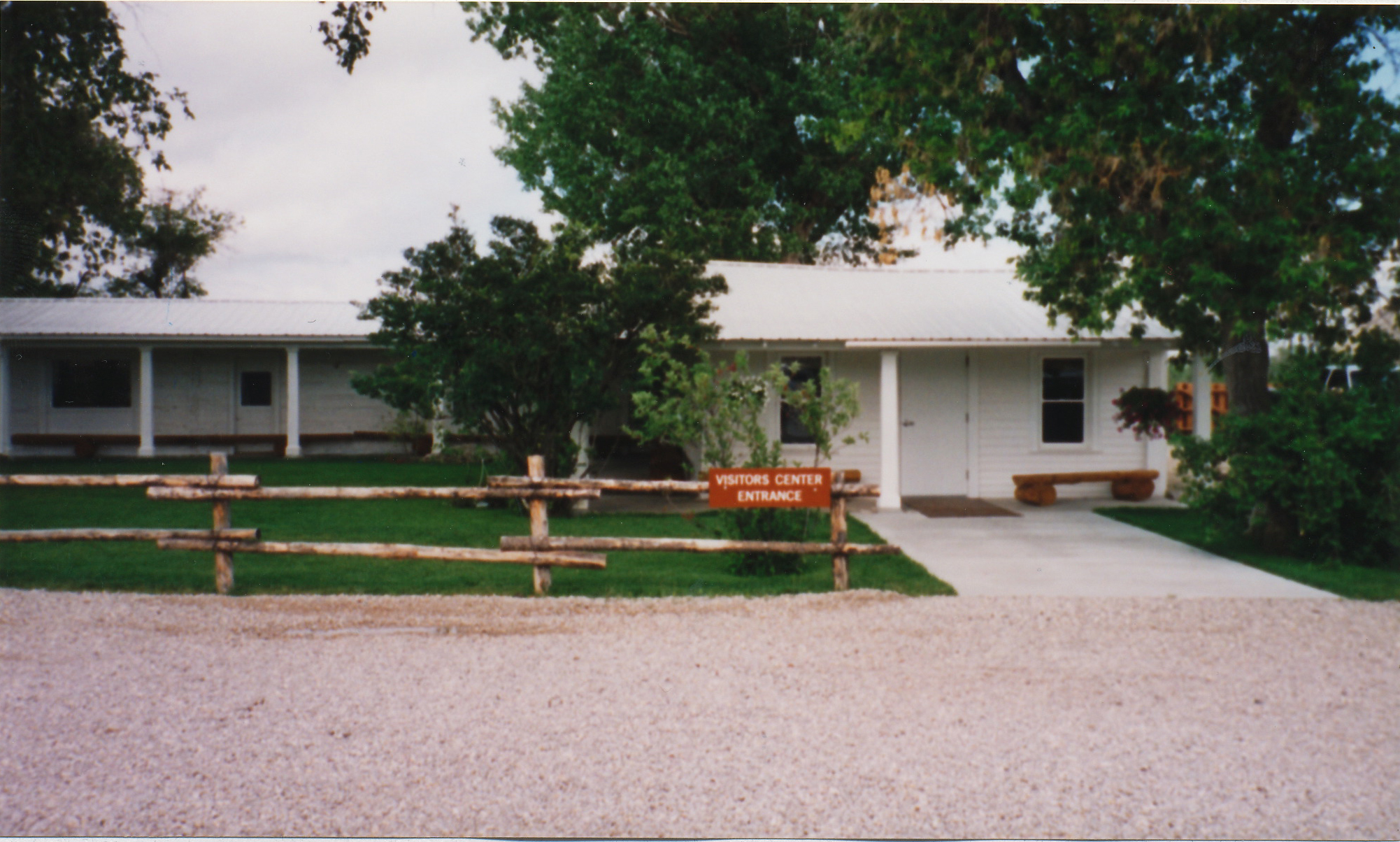
Sun Ranch
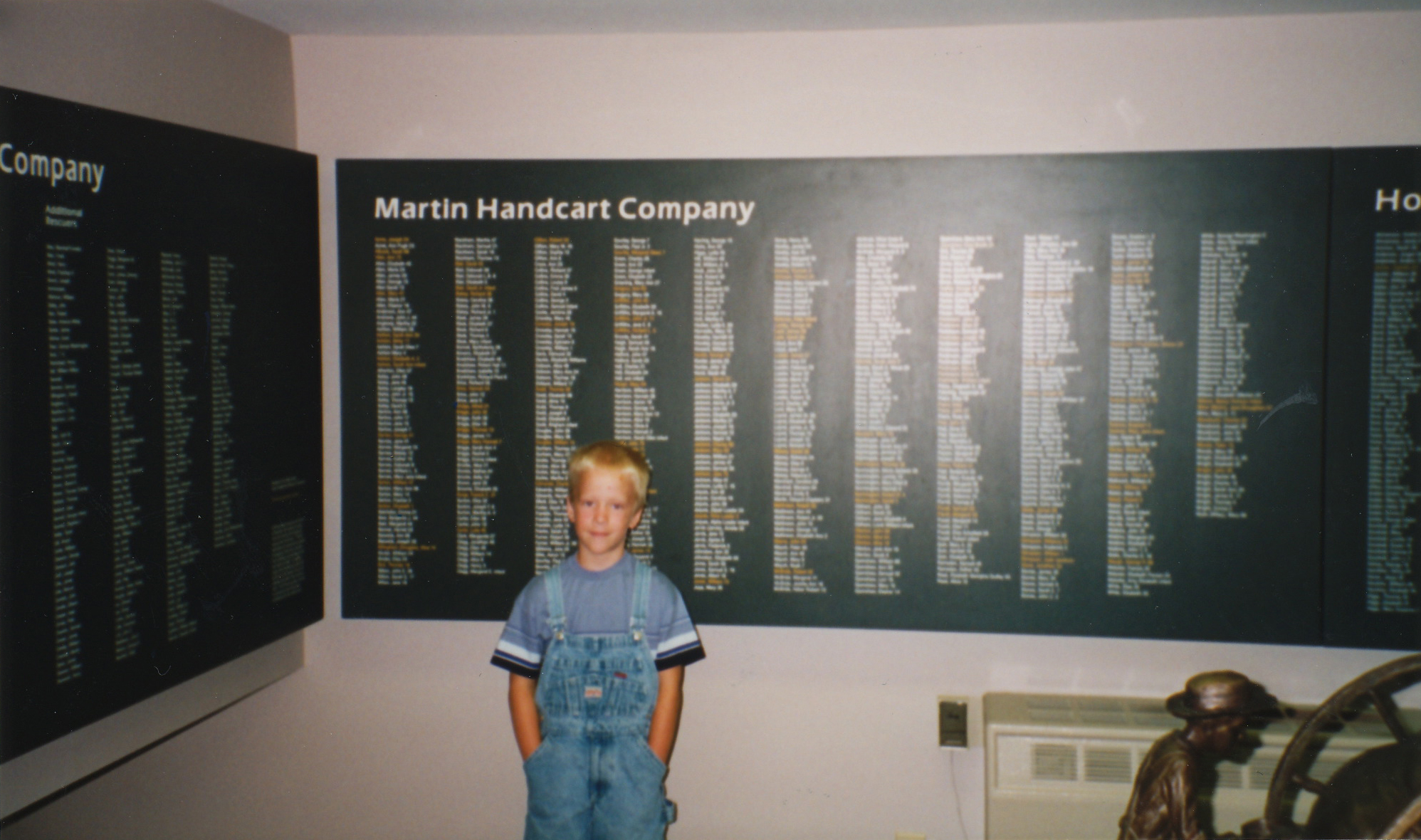
Cory and Martin Handcart Company list
Names in gold died on trail
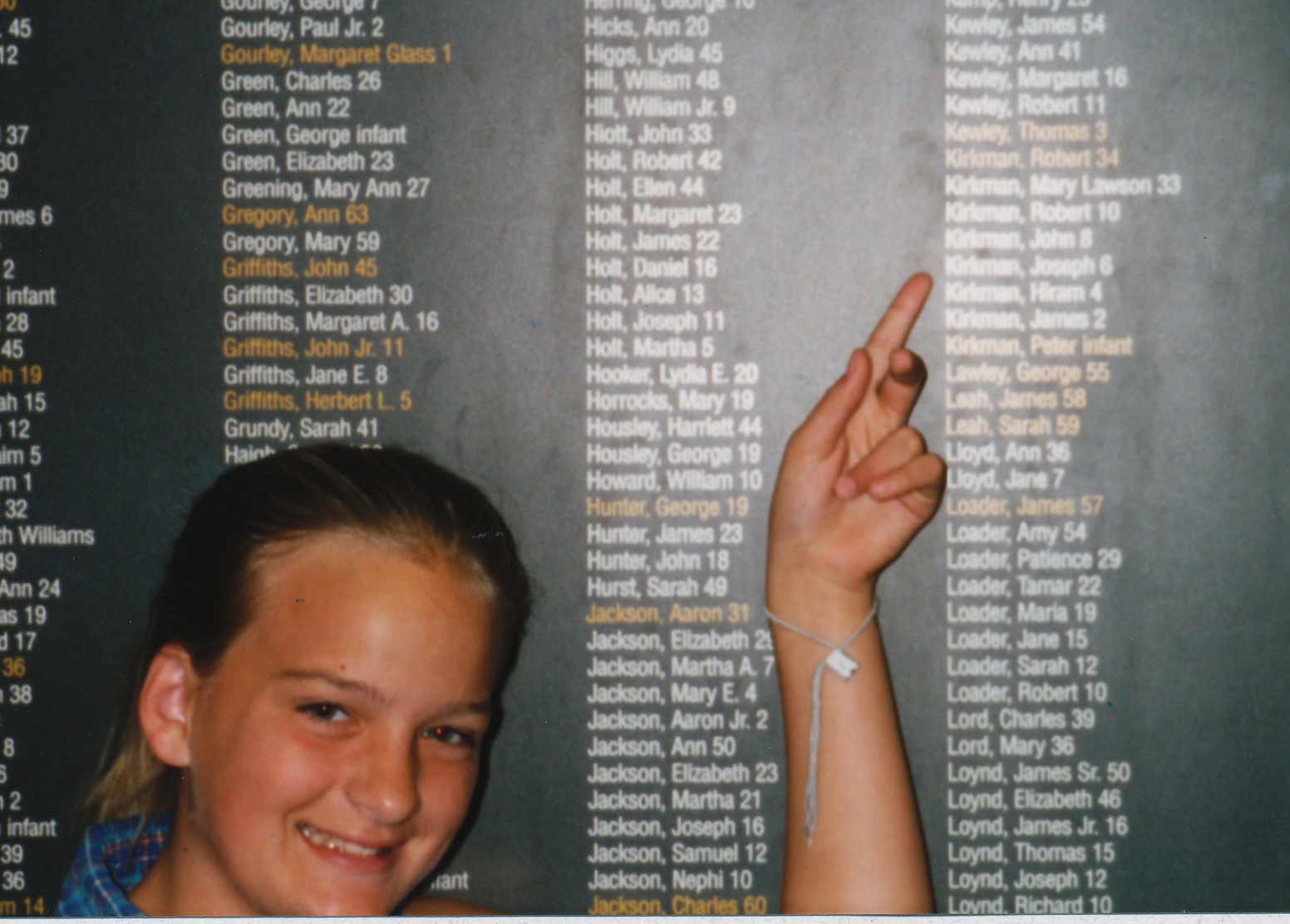
Shellie with the Kirkman family names
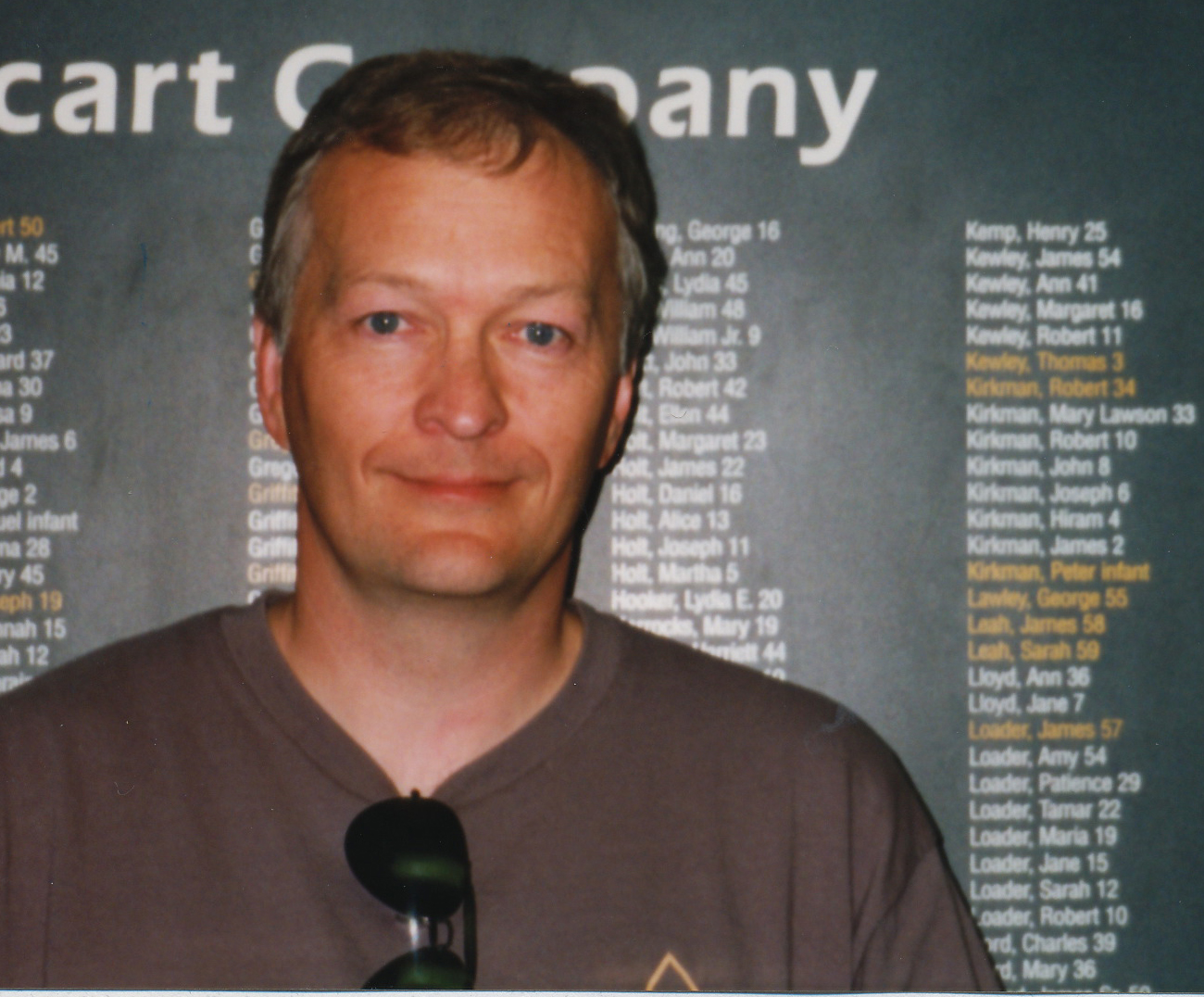
Michael with the Kirkman names

Shellie, Kevin, Cory and Nancy pulling a handcart to the Cove
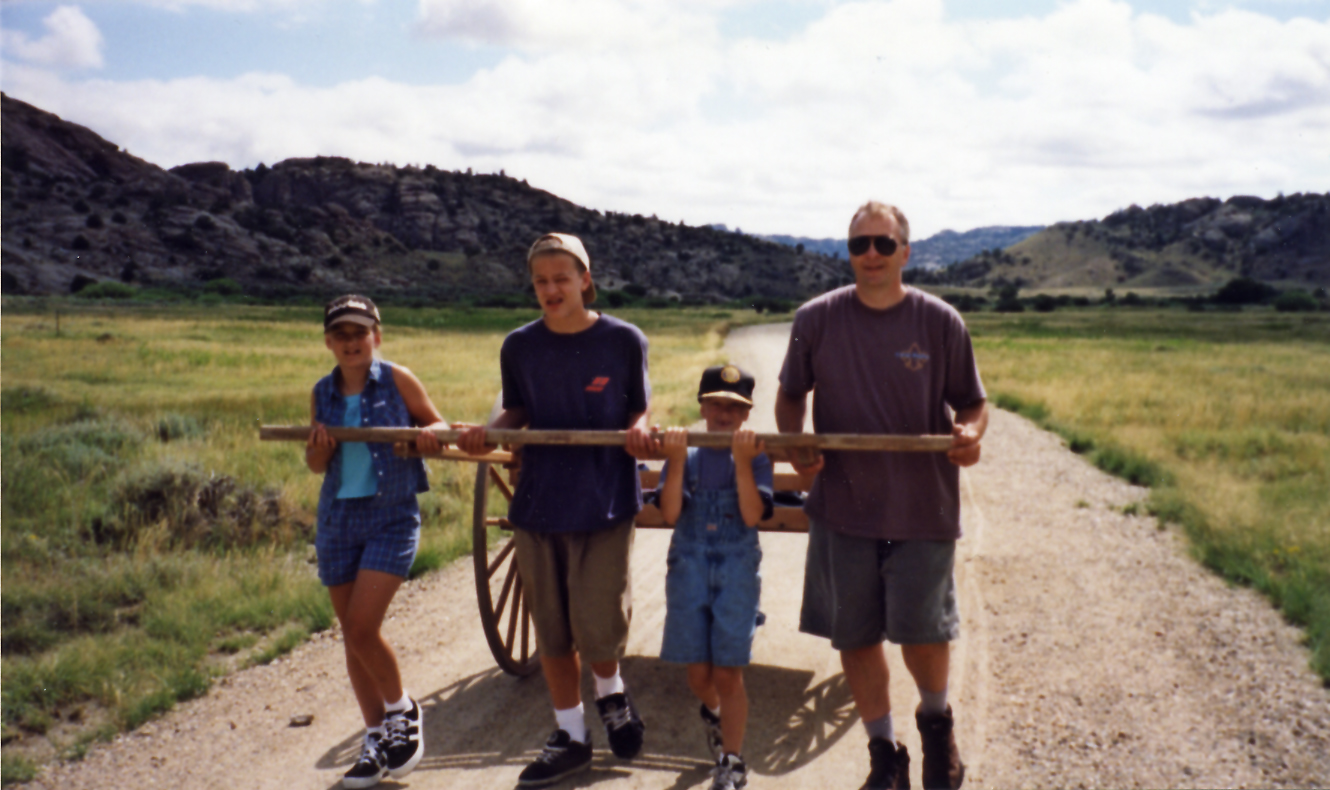
Shellie, Kevin, Cory and Mike pulling the handcart
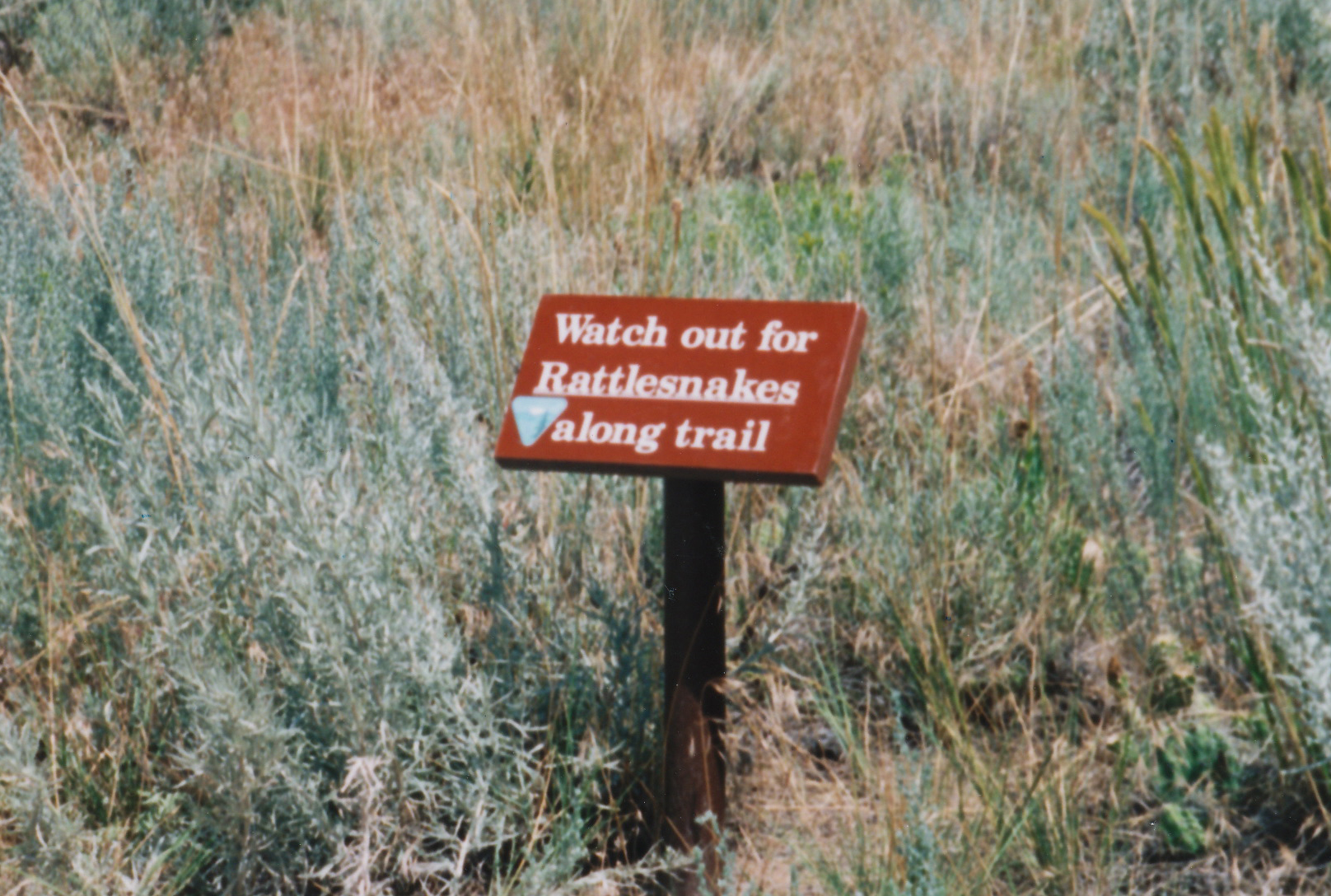
Sign along the trail
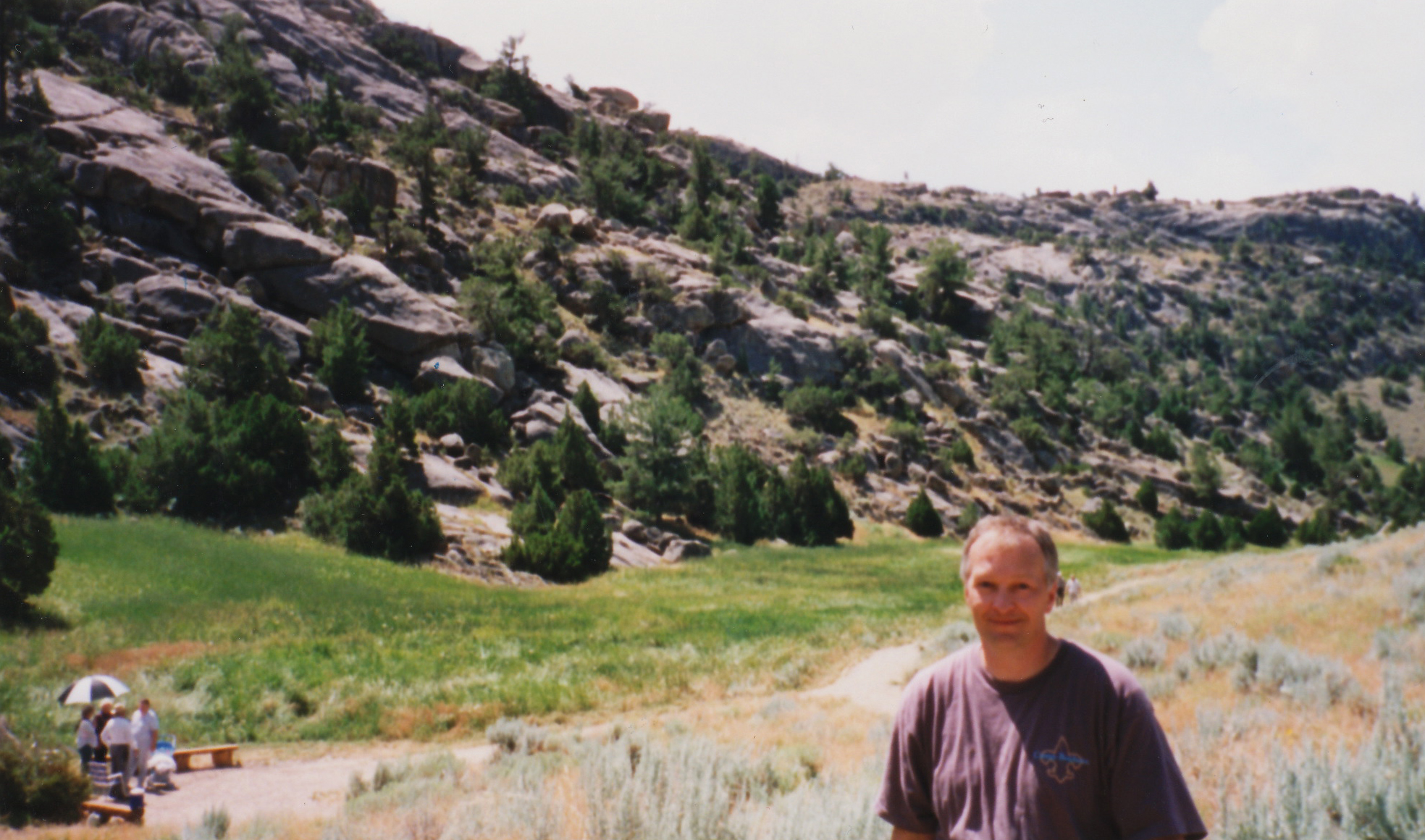
Mike above the campsite
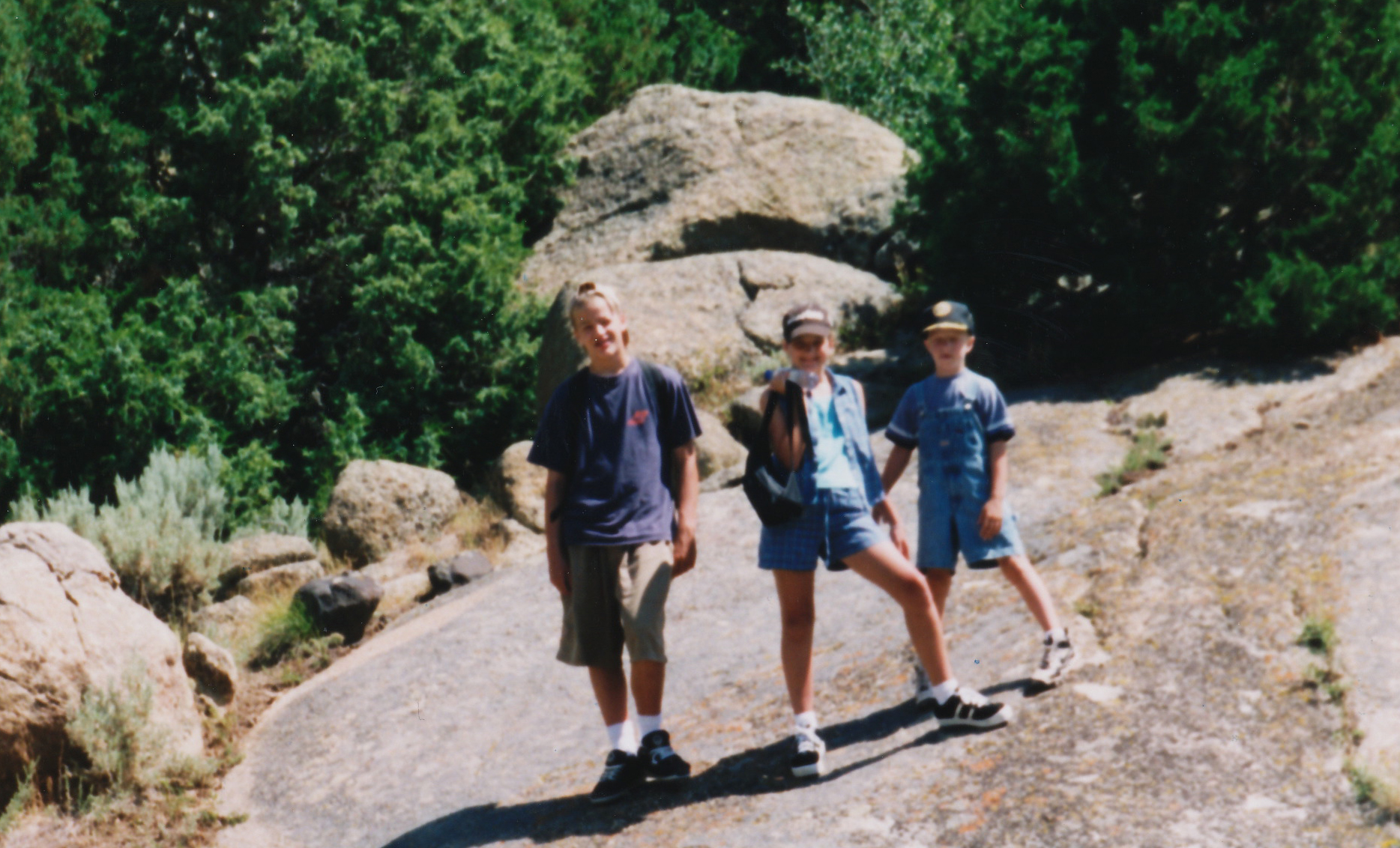
Kevin, Shellie and Cory at the back of the Cove
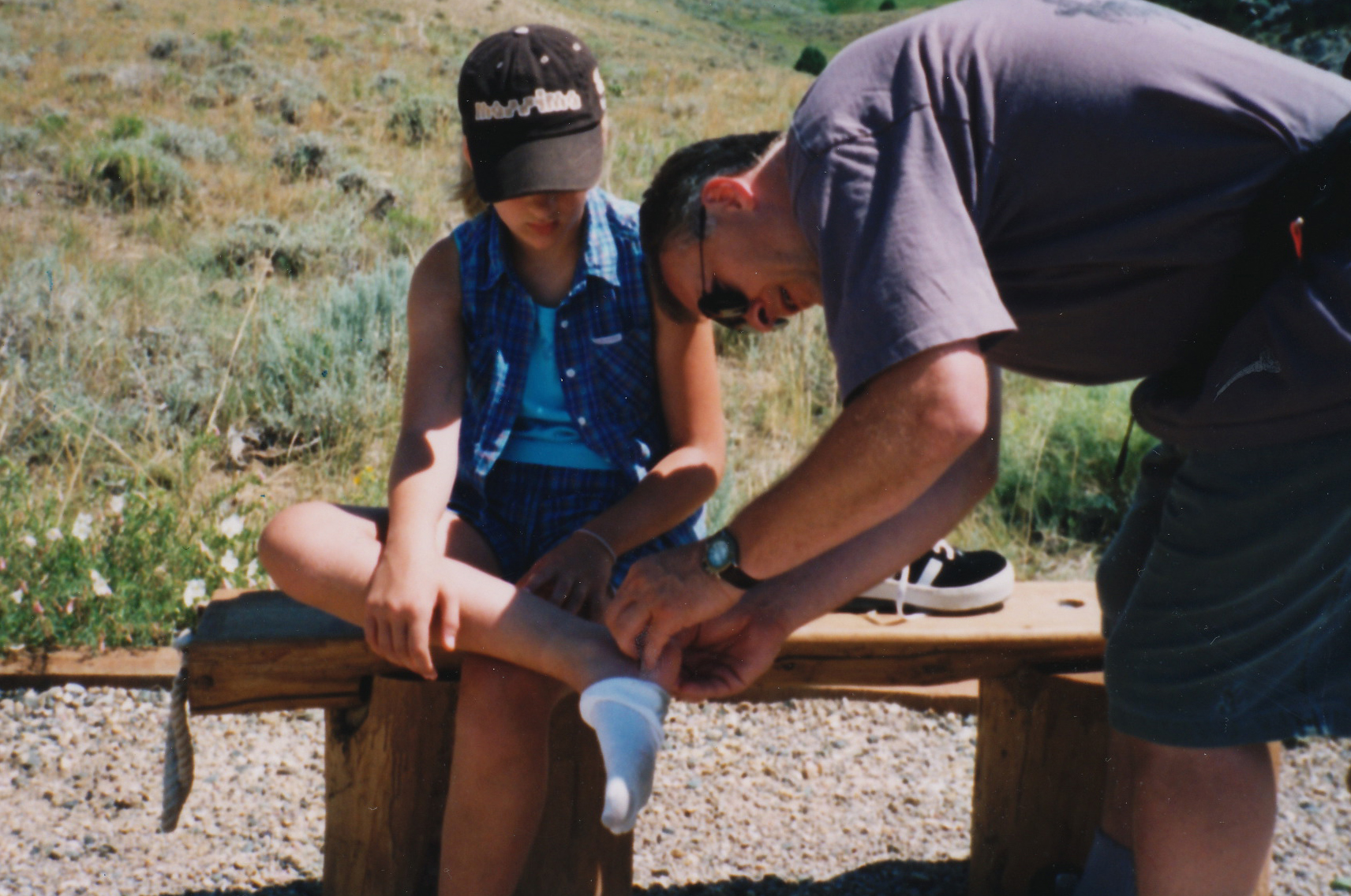
Shellie getting First Aid on the trail